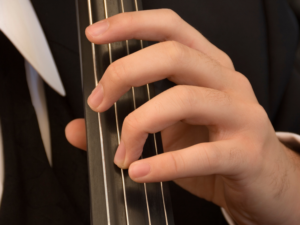If you are a cellist, then you know that keeping your instrument in tune is essential to sounding your best. The good news is that tuning a cello is not difficult – it just takes a little practice. In this comprehensive guide, we will walk you through the process step-by-step. We will also discuss some of the most common problems and how to fix them. So whether you are a beginner or an experienced cello player, this guide has something for you!
Tuning Cello Sequences
The first step is to find the right tuning sequence. There are many different ways to tune a cello, but we recommend using the following sequence:
-Start with the lowest string (the C string). Play an open C note and then use your tuning peg to adjust the pitch until it matches that of the reference note.
-Next, tune the G string to a perfect fifth above the C string.
-Then, tune the D string to a perfect fifth above the G string.
-Finally, tune the A string to a perfect fifth above the D string.
Now that you know the sequence, let’s go over how to actually tune each individual string.
Tuning the C String:
 The first step is to find the right tuning peg. The C string is located at the bottom of the cello, so you will need to use the left-most tuning peg. Once you have found the correct peg, gently insert your tuning key into the hole and turn it clockwise until the pitch is correct.
The first step is to find the right tuning peg. The C string is located at the bottom of the cello, so you will need to use the left-most tuning peg. Once you have found the correct peg, gently insert your tuning key into the hole and turn it clockwise until the pitch is correct.
Tuning the G String:
The next string you will tune is the G string. This string is located in the middle of the cello, so you will need to use the middle tuning peg. Once you have found the correct peg, repeat the same process.
Tuning the D String:
The third string you will tune is the D string. This string is located at the top of the cello, so you will need to use the right-most tuning peg. Once you have found the correct peg, repeat the same process again.
Tuning the A String:
The last string you will tune is the A string. This string is located in the middle of the cello, so you will need to use the middle tuning peg. Once you have found the correct peg, repeat the same process again for the last string.
Common Tuning Problems:
 If you are having trouble tuning your cello, there are a few things you can try. First, make sure that you are using the correct tuning peg for each string. Second, if the string is slipping out of tune, try tightening the peg a bit. Finally, if the string is still not staying in tune, you may need to replace it.
If you are having trouble tuning your cello, there are a few things you can try. First, make sure that you are using the correct tuning peg for each string. Second, if the string is slipping out of tune, try tightening the peg a bit. Finally, if the string is still not staying in tune, you may need to replace it.
Tuning a cello doesn’t have to be difficult – with a little practice, you’ll be a pro in no time! If you are unsure of what notes your first strings should be tuned to, you can consult a tuning chart or use an electronic tuner. Once you know what notes your strings should be tuned to, you can begin the process of tuning them.
If you have any other questions about tuning your cello, feel free to contact us at Prima Sonoro. We would be happy to help!

